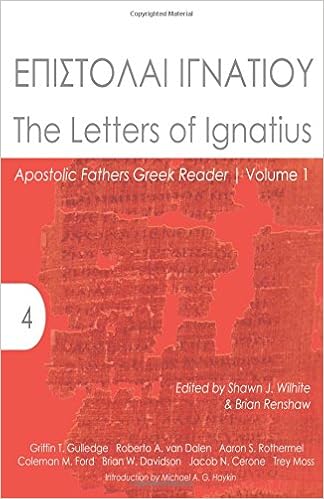So far it appears as if the articles in Septuagint Research are all composed as warnings for those conducting research within the Septuagint. As it might happen, I am a novice and I hope to do research in the Septuagint…soooo, yeah, warnings are good.
Working from the axiom that all translation is interpretation, Albert Pietersma examines the matter of what constitutes significant interpretation. Pietersma writes, “That the very act of translating is interpretation is an oft stated truth and, it seems to me, not subject to controversy. What may possibly be open to some dispute is my contention that not all such interpretation can be called exegesis. Consequently, the real question to be asked is not whether interpretation takes place in the transfer from the source language to the target language, but what level of interpretation takes place, and whether it is meaningful to dub any given level of interpretation ‘exegesis’” (34-35).
Pietersma establishes three criteria for interpretation to qualify as exegesis: 1) deliberate-ness, 2) methodical-ness, and 3) target oriented-ness. This threefold criteria is intended to elucidate whether the translator was acting as a medium (a minimalistic view of interpretation via translation) or an author (a maximalist view).
This should come as no surprise to the reader. Nevertheless Pietersma’s warning is substantiated by the tendency of Septuagint scholars to make much of a translator’s lexical selection on the basis of re-articulation (that is that interpretation of the Greek text by later interpreters, e.g. Asterius the Sophist and Didymus the Blind). Pietersma concludes by warning his reader to not confuse articulation (the translator’s work) with re-articulation (the interpretation of the translator’s work within dogmatically distinctive communities).
I will leave you with a few of Pietersma’s words:
“If its textual-linguistic make-up argues for a translation characterized more by formal correspondence than by dynamic equivalency, one’s approach to hermeneutics in the Septuagint should accord with that. As I see it, that means at a minimum that exegesis need to be demonstrated, not presupposed. From that perspective I would suggest that one work from the least intelligible phenomena to the more intelligible; that one proceed from the word level to high levels of constituent structure; that one pay more attention to deviations from the translator’s Hebrew-Greek defaults than to the defaults and standard equations or, to put it differently, that greater weight be given to what is unpredictable than to what is predictable; that mere representation of the source text does not constitute exegesis of the source” (45).








